French Tableware
Step into a world of elegance and refinement with French tableware, where every piece tells a story of tradition and artistry.
Imagine dining with the timeless grace of Limoges porcelain or sipping from intricately crafted crystal glassware.
French tableware is not just about dining; it’s about experiencing a rich cultural heritage through meticulous designs.
Discover the allure of French tableware, where sophistication meets functionality, and each meal becomes a luxurious affair.
Key Points
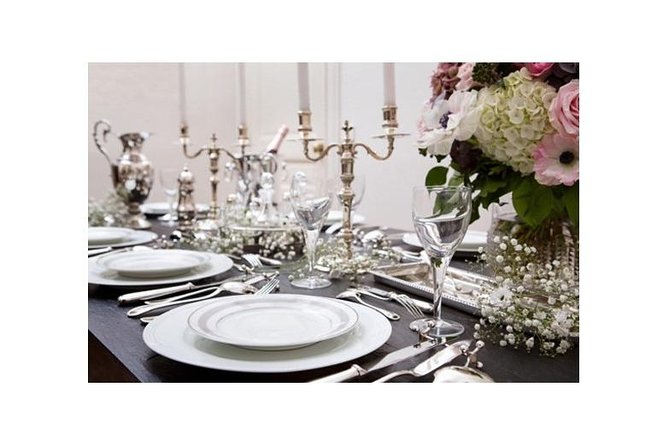
- French tableware boasts rich history, timeless elegance, and intricate craftsmanship.
- Traditional designs feature delicate patterns, gold accents, and regional variations.
- Renowned brands like Bernardaud and Christofle offer luxurious options.
- Proper care ensures longevity, preserving the beauty of French tableware.
History of French Tableware
French tableware has a rich and fascinating history that dates back centuries, showcasing exquisite craftsmanship and timeless elegance. The evolution of French tableware can be traced through various periods, each contributing unique styles and techniques.
From the ornate designs of the Renaissance to the delicate porcelain of the 18th century, French tableware has continuously evolved, adapting to changing tastes and trends. This rich heritage has had a significant influence on modern tableware, with many contemporary designs drawing inspiration from classic French patterns and motifs.
The attention to detail, quality materials, and elegant aesthetics that define French tableware continue to shape the industry today, making it a timeless and cherished choice for households around the world.
Traditional French Tableware Designs
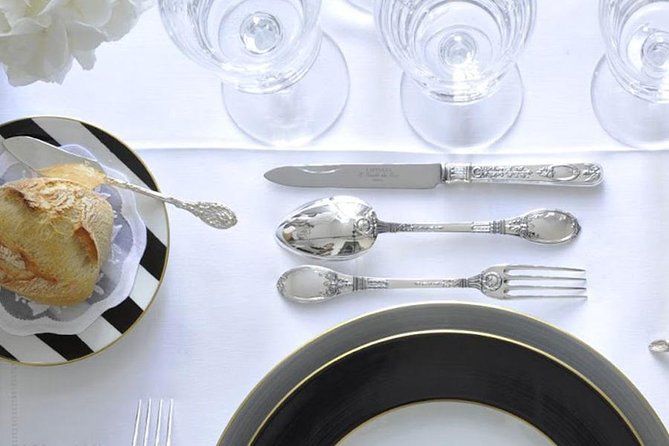
The evolution of tableware in France showcases a captivating journey through time, revealing a tapestry of intricate designs and enduring elegance. Traditional French tableware designs are renowned for their timeless beauty and attention to detail. These designs often feature delicate floral patterns, intricate gold accents, and classic blue and white motifs.
Regional variations add a unique touch to French tableware, with different areas of France showcasing their distinct styles and influences. Modern adaptations of traditional French tableware designs incorporate contemporary elements while still honoring the rich history and craftsmanship of the past.
Whether it’s the refined porcelain from Limoges or the colorful pottery from Provence, French tableware continues to enchant with its sophistication and charm.
Popular French Tableware Brands
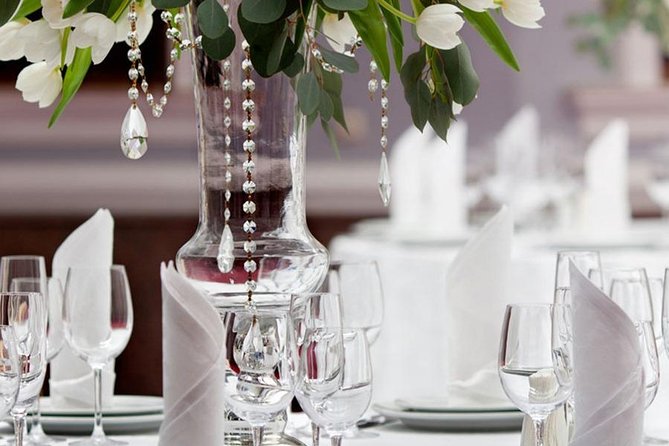
Renowned for their exquisite craftsmanship and timeless elegance, popular tableware brands from France captivate with their intricate designs and enduring allure. French tableware trends showcase a blend of classic sophistication and modern innovation, appealing to a wide range of tastes. These brands often utilize high-quality materials to ensure durability and beauty, with a focus on both traditional and contemporary styles.
Some popular French tableware brands include:
- Bernardaud: Known for its delicate porcelain creations
- Christofle: Renowned for luxurious silverware and table accessories
- Gien: Celebrated for its colorful and artistic earthenware designs
- Laguiole: Recognized for exceptional cutlery and flatware sets
- Revol: Innovating with culinary porcelain and stylish dinnerware
French tableware materials like porcelain, earthenware, silver, and stainless steel are commonly used by these brands to create stunning pieces that elevate dining experiences.
Choosing the Right French Tableware
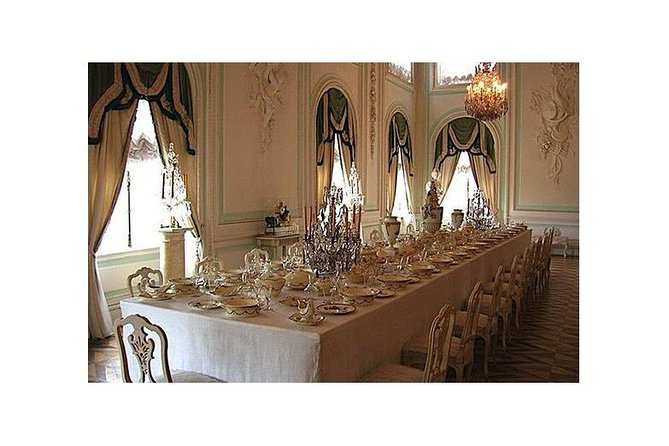
When selecting fine tableware from France, consider your dining style and preferences to ensure a perfect match for your culinary experiences. French tableware often reflects elegance and sophistication, enhancing the overall dining experience. Whether you prefer a traditional or modern table setting, there are various options available to complement your style. When setting the table for a classic French cuisine meal, having the right tableware can elevate the presentation and create a memorable dining experience. Here is a comparison table to guide you in choosing the right French tableware:
| Aspect | Traditional French Tableware | Modern French Tableware |
|---|---|---|
| Design | Ornate and intricate details | Sleek and minimalist |
| Materials | Porcelain or fine china | Stoneware or glass |
| Colors | Classic white and gold accents | Bold colors and patterns |
| Usage | Formal occasions and dinner parties | Everyday use and casual dining |
| Price Range | Higher cost due to craftsmanship | More affordable options available |
Consider these factors when selecting your French tableware to ensure it aligns with your preferences and table setting aesthetics.
Caring for French Tableware
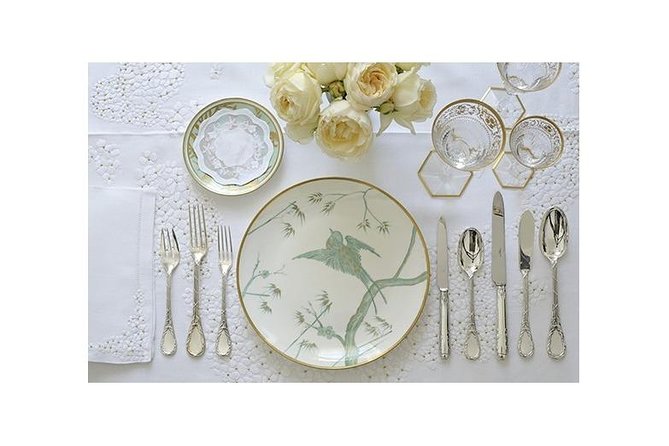
Taking care of French tableware ensures its longevity and preserves its beauty for years to come. When it comes to caring for your French tableware, consider the following tips:
-
Cleaning Techniques:
-
Hand wash delicate pieces with mild soap and warm water.
-
Use non-abrasive cloths to avoid scratching the surface.
-
Storage Solutions:
-
Store fragile items in a designated cabinet away from heavy traffic areas.
-
Consider using protective felt or fabric between stacked items to prevent chipping.
Proper cleaning techniques and storage solutions are essential in maintaining the quality and appearance of your French tableware collection. By following these guidelines, you can enjoy your elegant tableware for many gatherings to come.
Common questions

Are There Any Specific Rules or Etiquette for Using French Tableware?
When setting the table, proper placement and dining traditions are important. Understanding decorative elements and table setting enhances the dining experience. It’s crucial to follow etiquette guidelines to appreciate the aesthetic and cultural significance of tableware.
Is There a Difference Between Everyday French Tableware and Special Occasion French Tableware?
In determining the distinction between everyday and special occasion tableware, one must consider the essence of formal versus casual settings, as well as the interplay of traditional and modern design elements. Each serves a unique purpose.
What Materials Are Commonly Used in French Tableware Production?
Common materials used in French tableware production include porcelain, faience, earthenware, and glass. Traditional styles often feature intricate designs, while modern pieces lean towards sleek simplicity. Sustainable materials like bamboo and recycled glass are gaining popularity for eco-conscious consumers.
Are There Any Regional Variations in French Tableware Designs?
Regional influences play a significant role in shaping French tableware designs. Various regions showcase unique traditional patterns, reflecting local customs and heritage. These regional variations add depth and diversity to the rich tapestry of French tableware production.
How Does the History of French Tableware Influence Modern Designs and Trends?
The history of French tableware shapes modern designs and trends. Influenced by past traditions, contemporary pieces blend classic elegance with innovative elements. This fusion results in a diverse range of styles that reflect both heritage and modern aesthetics.
Last Words

To sum it up, French tableware is a true embodiment of elegance and luxury, with a rich history and enduring appeal. From delicate porcelain to ornate crystal glassware, each piece is crafted with meticulous attention to detail, making every dining experience a work of art.
Whether you prefer traditional designs or modern styles, French tableware offers a wide range of options to suit every taste. With proper care, these timeless pieces will continue to grace dining tables with their exquisite beauty for generations to come.